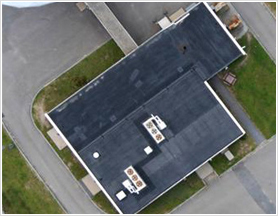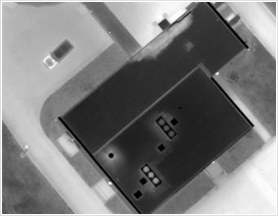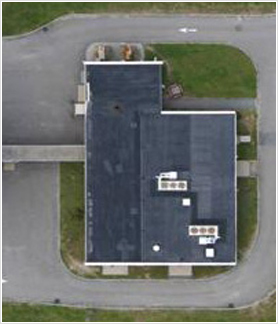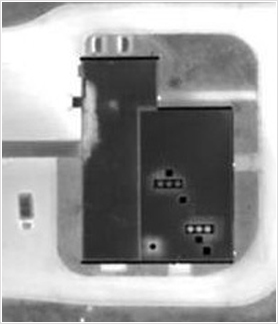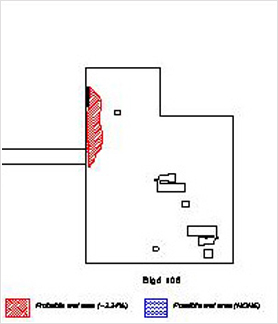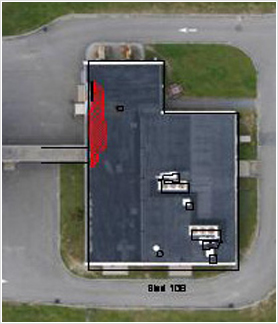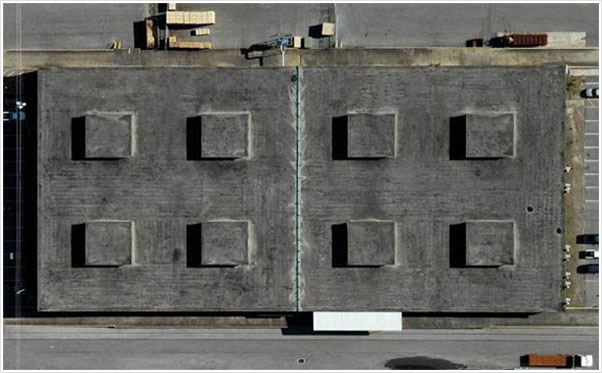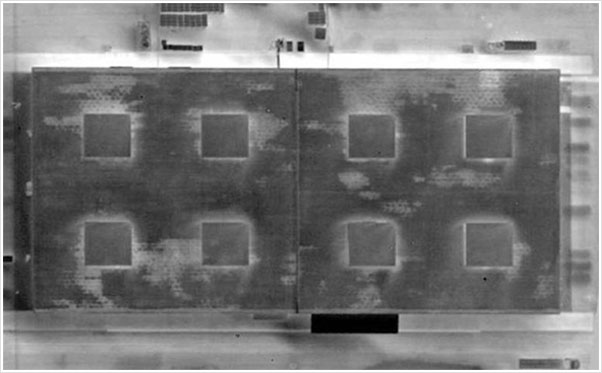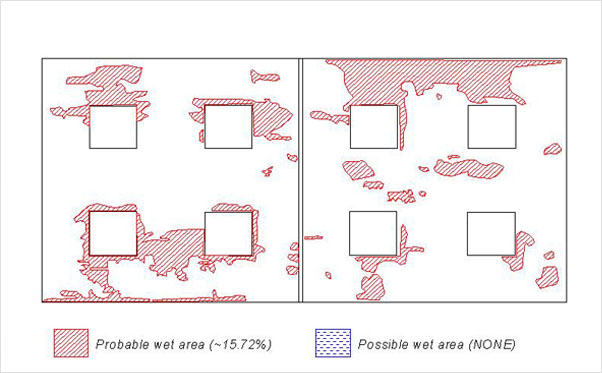How can Roof Moisture Surveys help?
Aerial roof moisture surveys provide a comprehensive and cost-effective way to accurately detect roof moisture issues before they become a serious problem. The biggest advantage of aerial infrared comes from the ease of scanning a variety of roofs that would otherwise be difficult to image.
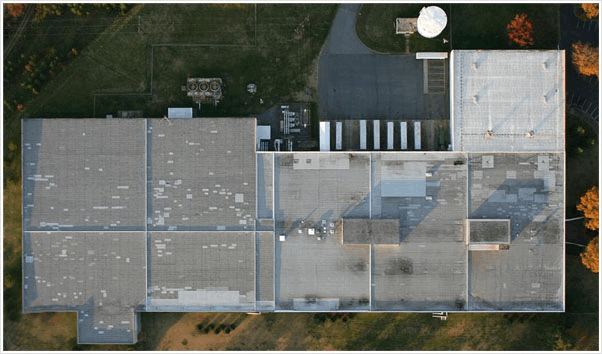
With the high-resolution ‘plan view’ of aerial imagery, slight nuances of temperature can be seen from far enough away to see a pattern of heat and pinpoint the exact location of issues.
Understanding Aerial Roof Imagery
Areas of roof moisture contamination often manifest themselves as warmer (lighter colored) areas and may be nebulous in shape, though they are commonly found in linear or puddle-like shapes. The linear shapes many times follow low areas, drainage routes, roof edges and seams. Puddle-like round or oblong shapes often form around roof penetrations such as mechanical equipment, standpipes, vents and drains.
The wet areas are lighter in color because the latent heat (from daylight sunshine) in the trapped water mass is greater than in the dry, functioning insulation or roof substrate. After sunset when the roof structure cools down, wet areas of roof insulation and other materials continue to radiate heat, allowing our sensitive infrared cameras to detect the sources of heat and record them for later analysis.
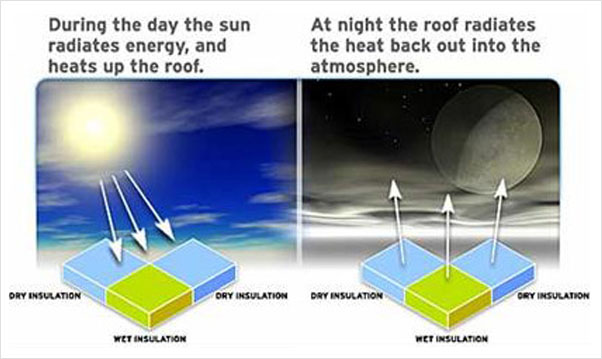
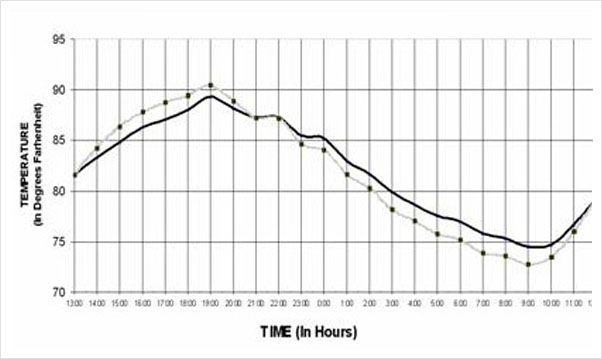
On-Roof Moisture Surveying
Infrared imaging is a proven method for identifying and defining moisture problems in your roof. This enables you to make informed decisions and will help develop your roof asset management program. Correct problem areas without the tremendous expense of replacing the entire roof.
As water enters your roof through the waterproofing layer(s) by tears, cuts, poorly sealed penetrations, failed flashings and caps, the insulation below can become laden with water and trapped in the roof substrate. If left in disrepair, the concrete deck absorbs or traps water, the wood deck rots. The metal deck rusts, and water intrudes into the building’s interior. Infrared thermography is useful in locating these moisture intrusions.
